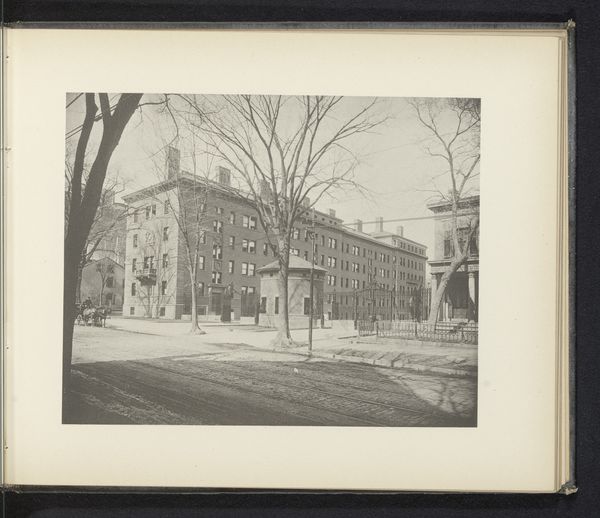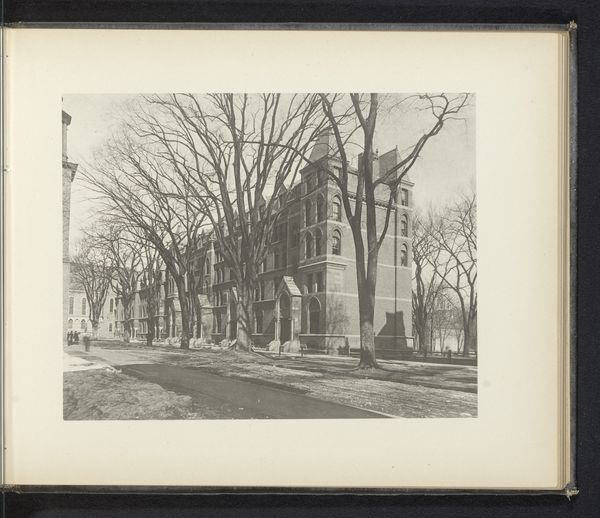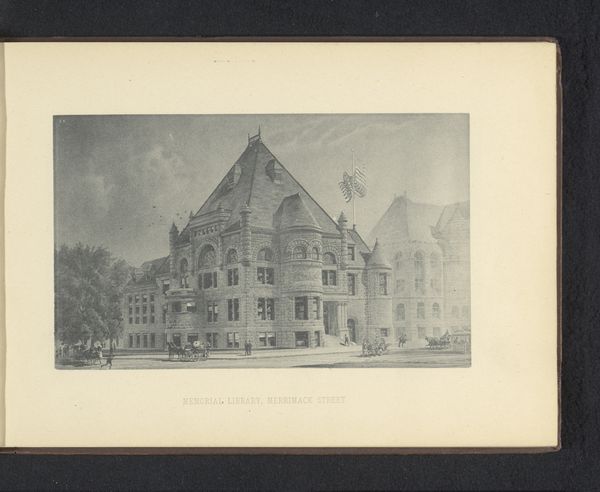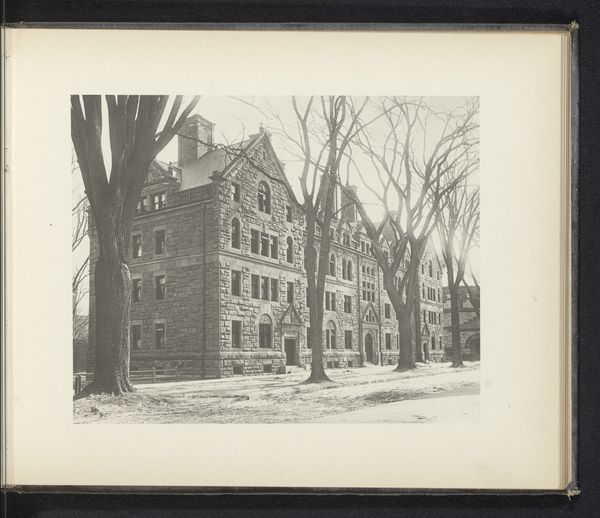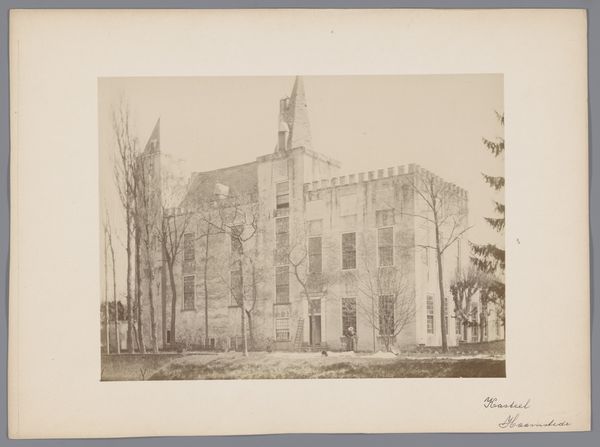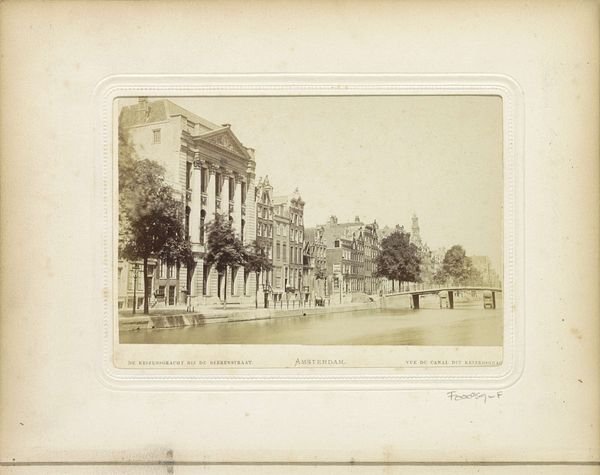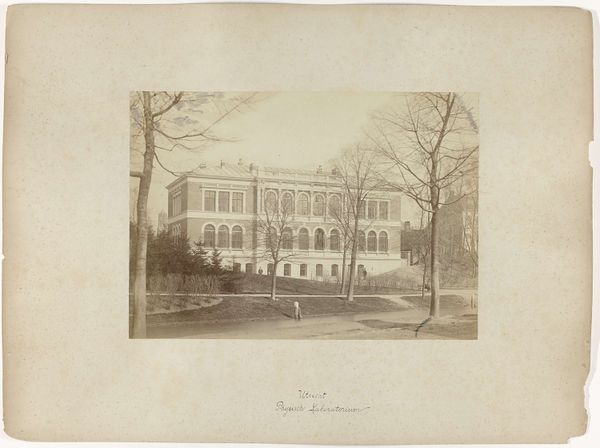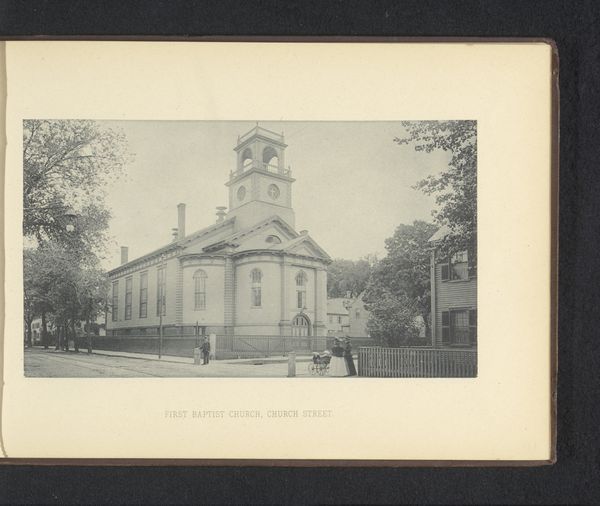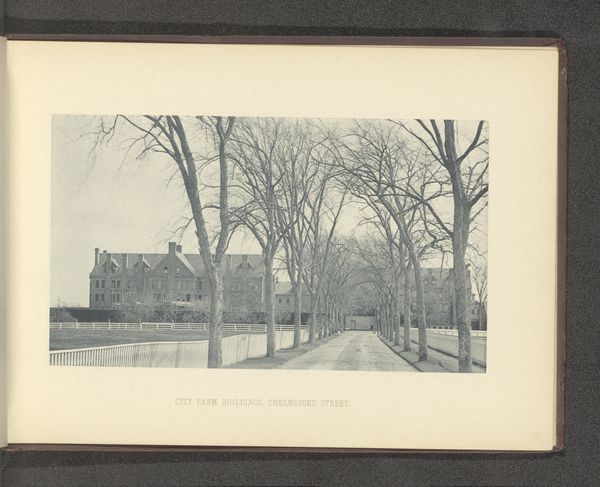
Gezicht op het laboratorium van George Gill Green voor Green's August Flower en Dr. Boschee's German Syrup in Woodbury before 1889
0:00
0:00
print, photography, photomontage
# print
#
photography
#
photomontage
#
cityscape
#
realism
Dimensions: height 137 mm, width 190 mm
Copyright: Rijks Museum: Open Domain
This image shows us an anonymous, undated view of George Gill Green’s laboratory, where Green's August Flower and Dr. Boschee's German Syrup were produced in Woodbury. The photograph presents a grand building, a monument to the burgeoning pharmaceutical industry of the late 19th century. It evokes the era's faith in science and medicine, while also hinting at the complicated relationship between health, commerce, and social class. Green's products, marketed as cure-alls, were particularly popular among working-class Americans seeking affordable remedies. The image captures more than just a building; it reflects the aspirations and anxieties of a society grappling with industrialization, urbanization, and the commodification of healthcare. This piece prompts us to consider the historical context of pharmaceutical advertising and its lasting impact on public health perceptions. What is sold to us, and why?
Comments
No comments
Be the first to comment and join the conversation on the ultimate creative platform.
